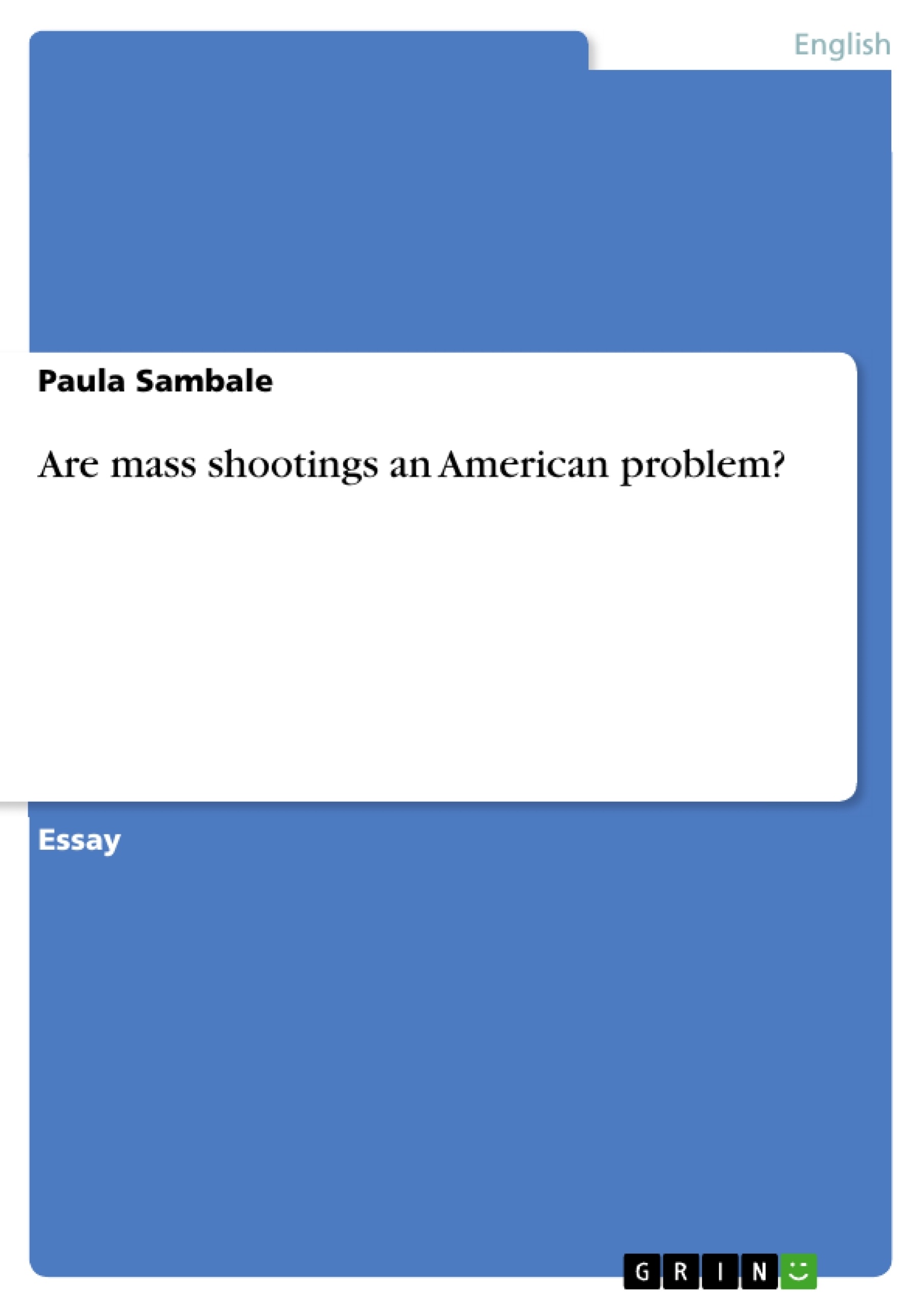Are mass shootings an American problem?
Columbine, Virginia Tech, Tucson, Aurora. A report by the Congressional Research Service (CRS) has identified 78 public mass shootings in the United States since 1983. Over 547 people were killed and another 476 people were injured (Bjelopera et al. 2013). In addition, there are also indications that the frequency of mass shootings has increased dramatically in recent years. Since the beginning of the 20th century, a strong positive trend has been observed (Lopez/Sukumar n.d.). As a result of these developments, mass shootings have grown into a subject of major debate on new national legislation to address the problem.
Inhaltsverzeichnis (Table of Contents)
- Definition of the term
- American gun culture
- The National Rifle Association
- Republicans vs Democrats
- American gun ownership and rates
- American strains
Zielsetzung und Themenschwerpunkte (Objectives and Key Themes)
This essay examines the issue of mass shootings in the United States and explores the complex interplay of gun culture, political stances, and psychological factors that contribute to the phenomenon.
- The definition and characteristics of mass shootings
- The historical and cultural context of gun ownership in America
- The influence of the National Rifle Association (NRA) on gun control policies
- The contrasting perspectives of Republicans and Democrats on gun control
- The relationship between gun ownership rates, murder rates, and mass shootings
Zusammenfassung der Kapitel (Chapter Summaries)
- Definition of the term: This section defines the term "mass shooting" according to FBI guidelines and outlines the characteristics of these events, including the number of victims, the location, and the motives of the perpetrators.
- American gun culture: This section explores the historical and cultural roots of gun ownership in America, tracing its origins to the country's founding principles and highlighting the role of firearms in various historical events.
- The National Rifle Association: This section delves into the role of the NRA as a powerful lobby group advocating for gun rights and its influence on legislation and public opinion.
- Republicans vs Democrats: This section examines the divergent views of the two major political parties on gun control, highlighting the differences in their legislative approaches and political rhetoric.
- American gun ownership and rates: This section presents data on gun ownership rates in the United States and compares them to global rates, highlighting the country's unique position. It also examines the correlation between gun ownership rates and murder rates, drawing conclusions about potential causes and implications.
- American strains: This section explores the psychological factors that may contribute to mass shootings, including societal pressures, unfulfilled aspirations, and the potential for mental health issues.
Schlüsselwörter (Keywords)
This essay focuses on the key topics of mass shootings, gun culture, gun control, political perspectives, the National Rifle Association (NRA), psychological factors, and the relationship between gun ownership rates and violence.
- Citar trabajo
- Paula Sambale (Autor), 2020, Are mass shootings an American problem?, Múnich, GRIN Verlag, https://www.grin.com/document/925364



